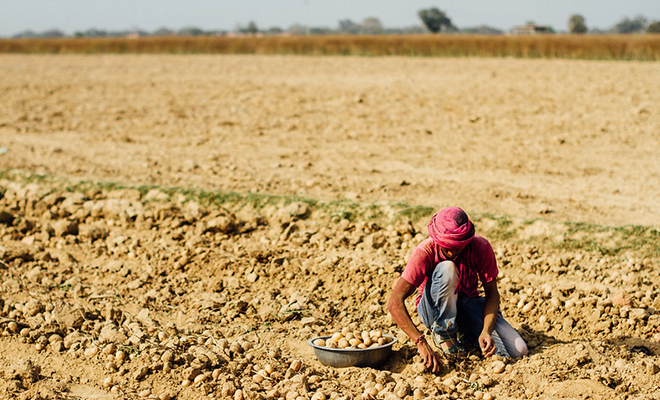Poverty is not a joke; and it can leave those who have experienced it first-hand permanently scarred. For some of us, it has become an obsession, forming the bedrock of all our intellectual pursuits. How do you lift a nation from poverty? This is the question that we always grapple with.
Thankfully, in our world, the answers are no longer mysterious. Hence, we can echo that opinion that is increasingly being shared among some schools of thought that poverty is now a choice.
A few weeks ago, I wrote an article about electricity, calling it a top priority for the Tanzanian government.
The issue is now a major impediment for growth and Tanzania will not realise its true growth potential if it doesn’t address it. Today, I propose that agriculture should come next in terms of government priorities.
Politicians in Tanzania love to pay lip service to the issue of agriculture. We call it the backbone of our economy and, considering that it contributes the most to our GDP, 27 percent – and employs the highest number of people, 67 percent – it probably is.
But we do not walk the talk.
The Magufuli government, in its fresh brand of political pragmatism, decided to have neither the talk nor the walk altogether. A 2020 Policy Forum’s paper showed that, one, the budget allocation for agriculture decreased from a high of 8.1 percent in 2010-2011 budget to a low of 1.6 percent in 2020-2011 budget, and that between 2016 and 2020, budget disbursements were below 50 percent! One was left wondering what all this purported.
Government apologists would say that some of the investments that go in other sectors, say roads, will end up fixing agriculture too. Unfortunately, that flies in the face of sensible economics logic.
A review of investment models in agriculture shows that while a dollar invested in agriculture returns $3.2, but a dollar invested in transport for agriculture, for example, returns only $1.7. The point is – if you care for agriculture, invest in agriculture not for agriculture.
With 60 percent of arable land, Africa contributes only 4 percent of global agricultural output and remains a net importer of agricultural products. The continent still spends over $30 billion every year importing maize, rice, palm oil, and wheat. This is wealth that is being transferred from Africa while Africans are left impoverished. This is the choice that our leaders are making. The situation in Tanzania is quite similar to that. Tanzania still spends huge amounts of money importing agricultural products which can easily be produced locally.
Until 2019, Tanzania was spending about $500 million a year on sugar and cooking oil imports alone. The nation still imports rice, wheat, milk products, juices, fruits, vegetables, etc. This makes a mockery of the idea that there is a true intention of uplifting the Tanzanian masses from poverty.
There is no leadership intervention that can reduce poverty in Tanzania faster than in agriculture.
For example, with a production of about 80 million to 85 million birds a year today, poultry contributes 1.8 percent to Tanzania’s GDP. Doubling that figure will generate about $1.2 billion more in terms of GDP. With demand projected to reach 2.4 billion birds by 2030, why is the government missing even its quite lazy growth targets?
Agriculture presents many such low-hanging fruits for rapid economic growth. Subsistence farmers don’t even need money to benefit significantly – household food security and additional nutritional inputs alone will be a huge contribution towards their quality of life.
So, what does Tanzania need to do?
Having spoken to multiple experts – and I would like to acknowledge the unique contribution of Dr Bravious Kahyoza, an economist, here – I suggest the government should increase its ‘investment’ in agriculture by 10 percent in each of the following four areas:
One: production and productivity. Tanzanians use only 20 percent of what farmers in South East Asia use in terms of fertilizers where only 2.4 percent of cultivated land is irrigated. Increasing government spending by only 10 percent would increase production by 200 percent.
Two: post-harvest handling. Currently, around 40 percent of agricultural products go to waste. Investing only 10 percent more of what is being done in modern warehouses, silos, and cold chain storage, would reduce losses by 25 percent.
Three: value-addition. Experts estimate that 41 percent of potential profits in agro-processing is lost due to inadequate investments in value chain addition. Tanzania, which currently sits at number 6 in agro-processing in Africa, behind the likes of Morocco, Kenya, South Africa and Mauritius, has the potential to be number 1 in Africa if the right steps are taken.
Four: marketing. Due to its size, geography and demographics, Tanzania has huge local and international markets to serve. But the sector is held back not for the absence of demand but the absence of forward and backward linkages between supply and demand sides. As a result, much of what is consumed is imported and per capita income is much lower compared to nations found in our private consumption quadrant.
The genius of this model is that it provides solutions to major aspects of the value chain simultaneously thus unclogging the whole machinery. The outcome will be to unleash GDP growth at a rate not previously seen in Tanzania before.
That said, given the significant defunding of the sector during Magufuli years, the government should first attempt to bring spending to the previous average of about 6 percent of the budget, then start to increase it strategically as described towards 10 percent of the budget, as it committed itself under the 2003 Maputo agreement.


